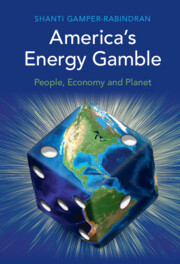Book contents
- America’s Energy Gamble
- Reviews
- America’s Energy Gamble
- Copyright page
- Dedication
- Contents
- Acknowledgments
- 1 Introduction
- Part I America’s Energy
- 2 Oil and Gas
- 3 Renewable Energy
- Part II America’s Lands
- Part III America’s Seas
- Part IV America’s Regulatory Process
- Part V The Global Climate
- 12 America at a Crossroads
- Index
- References
3 - Renewable Energy
Setbacks, Successes and Strategies for the Energy Transition
from Part I - America’s Energy
Published online by Cambridge University Press: 06 January 2022
- America’s Energy Gamble
- Reviews
- America’s Energy Gamble
- Copyright page
- Dedication
- Contents
- Acknowledgments
- 1 Introduction
- Part I America’s Energy
- 2 Oil and Gas
- 3 Renewable Energy
- Part II America’s Lands
- Part III America’s Seas
- Part IV America’s Regulatory Process
- Part V The Global Climate
- 12 America at a Crossroads
- Index
- References
Summary
Renewable energy, including wind and solar, has won the support of state governments by offering cost-competitive electricity, revenue to rural landowners and job opportunities. Utility companies and private companies are shifting to renewable energy that is already cheaper than coal and natural gas generation in many locations, while retaining their systems’ reliability and resilience. The Trump administration’s attempts to counter market forces that favored cheaper wind and solar largely failed to impede the progress of renewable energy. The United States, as documented in several studies, can achieve 80 percent renewable energy in its electric grid by 2035, up from 20 percent in 2020, using existing technologies, but that transition calls for a variety of supportive policies. Strategies that share the benefits from renewable energy adoption with communities that host renewable energy projects and transmission lines can help accelerate that transition, while securing broad political support. These strategies include assistance to rural electricity cooperatives to shift out of coal, developers’ benefit-sharing agreements with local communities and strategies to enhance project ownership by local communities. Likewise, targeting renewable energy projects at communities hosting fossil fuel power plants and fossil fuel generation can help achieve a more equitable energy transition.
Keywords
- Type
- Chapter
- Information
- America's Energy GamblePeople, Economy and Planet, pp. 58 - 106Publisher: Cambridge University PressPrint publication year: 2022

